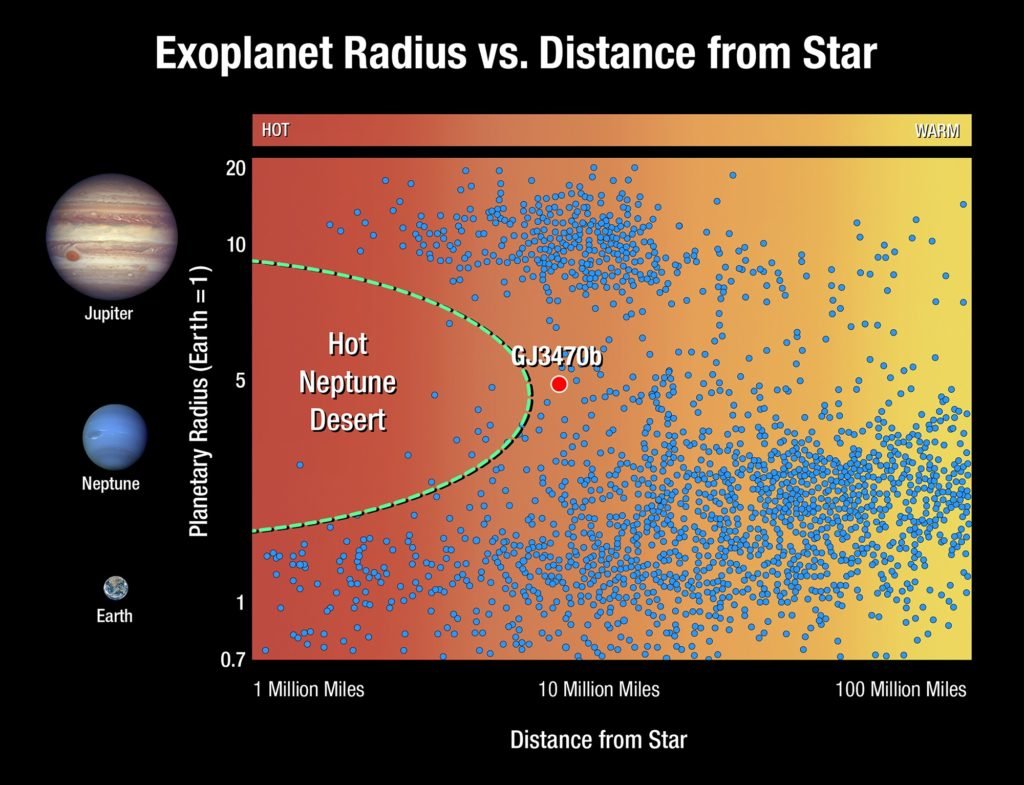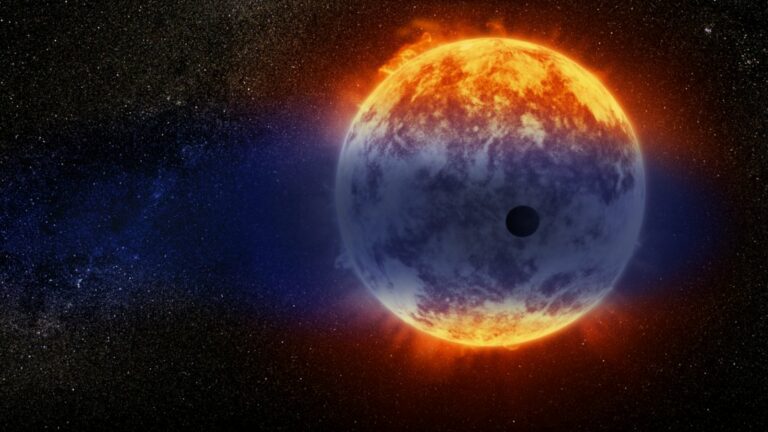Hubble discovers distant planet disappearing at an unprecedented rate
The fate of a planet within its solar system is determined by the speed and distance at which it orbits its blazing star. This can either result in the planet remaining a longstanding part of its solar system or evaporating into the dark graveyard of the universe at a faster pace.Astronomers, in their pursuit of understanding distant planets beyond our own solar system, have made a significant discovery. They have found that a medium-sized planet called GJ 3470b, which is similar in size to Neptune, is evaporating at a rate 100 times faster than another previously discovered planet of similar size, GJ 436b.
These findings, which have been published in the journal of Astronomy & Astrophysics, contribute to the advancement of astronomers’ knowledge regarding the evolution of planets.
According to David Sing, an author on the study and the Bloomberg Distinguished Professor at Johns Hopkins, this discovery serves as undeniable evidence that planets can lose a substantial portion of their mass. GJ 3470b is losing more mass than any other planet observed thus far. In a few billion years, half of the planet may cease to exist.The study is part of the Panchromatic Comparative Exoplanet Treasury (PanCET) program, led by David Sing. The program aims to analyze the atmospheres of 20 exoplanets using ultraviolet, optical, and infrared light as they orbit their respective stars. PanCET is the largest exoplanet observation program conducted with NASA’s Hubble Space Telescope.
One particular area of interest for astronomers is understanding how planets lose mass through evaporation. Planets such as “super” Earths and “hot” Jupiters, which orbit closer to their stars, experience higher temperatures. This leads to the outermost layer of their atmospheres being blown away through evaporation.

In this research, the Hubble telescope discovered that the exoplanet GJ 3470b experienced a significant loss of mass and had a smaller exosphere compared to the first Neptune-sized exoplanet, GJ 436b. This is due to GJ 3470b’s lower density and its exposure to a stronger radiation from its host star.
The lower density of GJ 3470b prevents it from retaining its heated atmosphere gravitationally. Additionally, the star hosting GJ 3470b is younger, being only 2 billion years old compared to the 4 to 8 billion years old star hosting GJ 436b. A younger star is more active and emits more radiation, which contributes to heating the atmosphere of the planet.
The team led by Sing estimates that GJ 3470b may have already lost around 35 percent of its total mass. In a few billion years, it is possible that all of its gas will be stripped away, leaving behind only a rocky core.
Sing stated that this research helps in gaining a better understanding of how planets are formed and what factors influence their composition. The goal of this study, along with the broader PanCET program, is to analyze the atmospheres of various planets and determine how each planet is influenced by its unique environment. By comparing different planets, scientists can gradually assemble a comprehensive understanding of their evolution.
In the future, Sing and the team have aspirations to expand their research on exoplanets by investigating helium in infrared light, which offers a wider scope for exploration compared to the current method of searching for hydrogen in UV light.
At present, the study of planets, primarily composed of hydrogen and helium, is limited to tracing hydrogen using UV light. However, with the utilization of the Hubble telescope, the upcoming NASA James Webb Space Telescope (which possesses enhanced sensitivity to helium), and the newly discovered instrument called Carmenes, Sing and other astronomers will be able to accurately track the movement of helium atoms. This advancement will enable them to extend their investigation of distant planets.
This article is republished from PhysORG under a Creative Commons license. Read the original article.
Do not forget to share your opinion with us to provide you with the best posts !




0 Comments